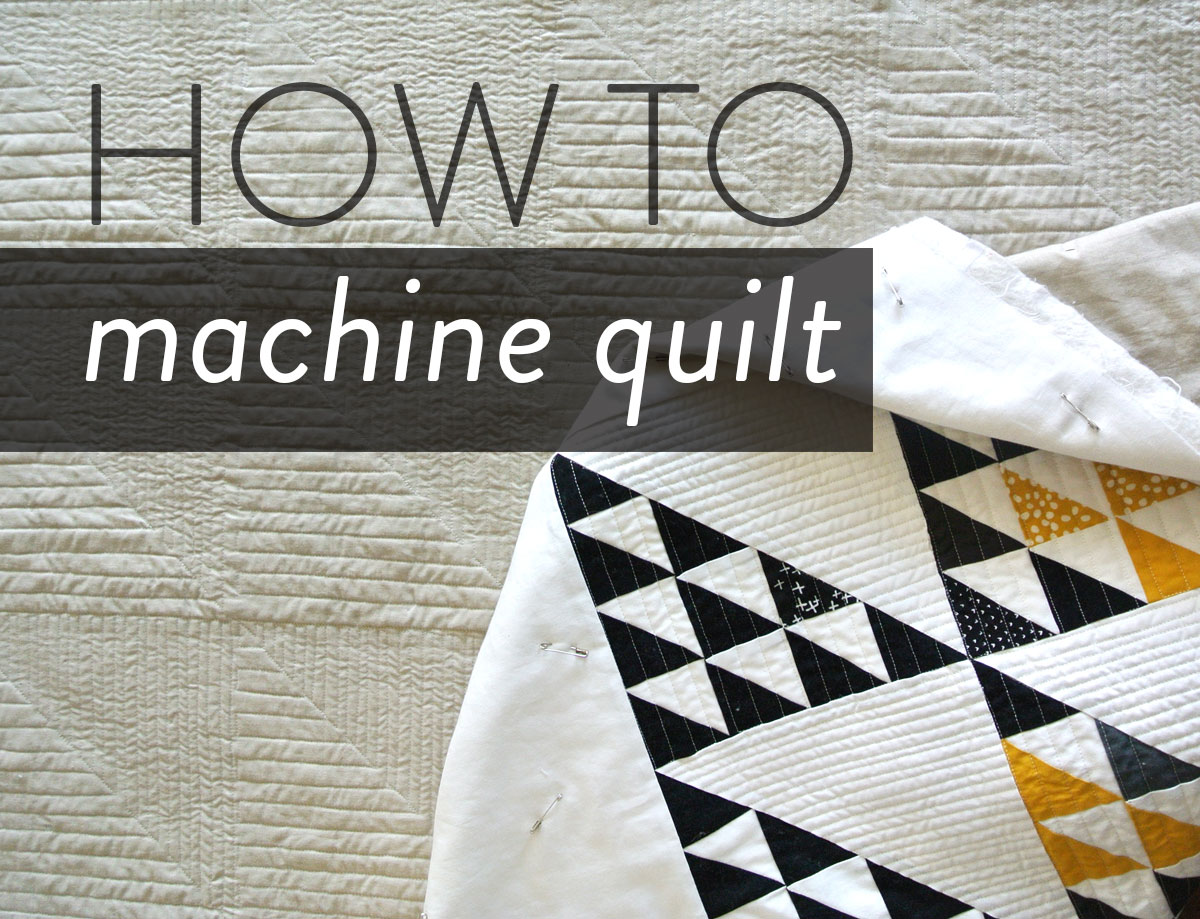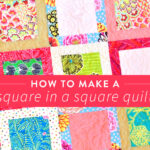If you’re looking for a cozy and creative project to take on this winter, then a flannel quilt is the perfect project for you. In this article, we will provide you with an easy-to-follow, step-by-step guide on how to make a flannel quilt. We will cover everything from the materials needed, to the construction of the quilt, to the final finishing touches. So grab your supplies and let’s get started crafting your very own cozy creation!
Materials and Tools

For making a simple flannel quilt, you need the following materials and tools:
| Materials | Tools |
|---|---|
| Flannel fabric (in a variety of colors and prints) | Pins |
| Batting | Thread |
| Backing fabric | Sewing machine |
| Binding fabric | Rotary cutter |
Preparing the Fabrics

- Select the right size of flannel: To make a full-size quilt, select a yard and a half of flannel fabric for the backing and four yards of flannel for the top.
- Cutting the fabric: Cut the fabric into 15-inch-wide strips. The strips should be the same width as the batting.
- Layering the fabrics: Start with the backing fabric and layer the batting and the top flannel fabric on top of it. Make sure all the layers are smooth and free of wrinkles.
- Pin the fabrics: Pin the layers together to keep them in place while you are sewing them together. This will help ensure that all the layers are securely held together.
- Sewing the fabrics: Sew the layers together using a large stitch length. This will help to ensure that the seams are strong and don’t come apart.
- Ironing the fabrics: After sewing the layers together, iron them to make sure all the seams are flat and the layers are secure.
Once all the fabrics have been prepared, you can start piecing together the quilt top for your full size flannel quilt.
Constructing the Quilt Top

Choosing a Pattern
When it comes to making a flannel quilt, one of the most important decisions is the pattern. Choose a pattern that works with the flannel fabric to create the desired look. Consider quilting basic shapes, such as squares, rectangles, and triangles, to create a classic, timeless quilt.
Calculating the Size of the Quilt
Once a pattern is chosen, the next step is to calculate the size of the quilt. Measure the bed size and decide how much overhang is desired. Multiply the number of blocks needed in each row and column to get the desired quilt size.
Cutting the Fabrics
To construct the quilt top, begin with cutting the fabrics. Use a rotary cutter, cutting mat, and ruler to ensure accuracy. Make sure to use sharp scissors and pins to prevent stretches and frays in the fabric.
Sewing the Blocks Together
Once all the blocks are cut, arrange them together as desired. Sew the blocks together using a sewing machine, making sure to use the right stitches and tension. To get the best results and ensure that the quilt is strong and long-lasting, what is the best way to quilt flannel is to use a walking foot.
Quilting the Quilt

Choosing a Quilting Pattern
When quilting a flannel quilt, the first step is to choose a quilting pattern. There are many quilting patterns to choose from including straight line quilting, free-motion quilting, and traditional quilting. Consider the pattern of the quilt top, the size of the quilt, and the type of flannel used when selecting a quilting pattern.
Quilting the Quilt Top
Once a quilting pattern is selected, it’s time to quilt the quilt top. Start by basting the quilt top, batting, and backing together. Then, quilt the quilt top following the chosen quilting pattern.
Best Way to Quilt Flannel
When quilting flannel, it is best to use a walking foot. This will help to prevent the flannel from stretching and warping during quilting. It is also important to use a needle designed for quilting and a light thread.
How Close Together to Quilt Flannel
When quilting flannel, it is important to quilt the fabric close together. This will help to keep the fabric from shifting and bunching during the quilting process. It is recommended to quilt with a maximum of two inches between stitches.
Finishing the Quilt
Once the quilt top is finished, it is time to finish the quilt. There are three steps when finishing a quilt: adding the binding, pressing the blocks, and pressing the quilt top.
Adding the Binding
Adding binding to the quilt is the process of sewing the binding strips around the quilt. Cut strips of fabric to the desired width and sew them together to create a continuous strip. Attach the binding to the quilt by machine stitching it in the ditch of the quilt.
Pressing the Blocks
Pressing the blocks is an important step in making a quilt. It helps to set the seams and create a professional finish. To press the blocks, start by pressing the seams to one side. Then, use a dry iron and press the blocks from the wrong side. This will help to smooth out any puckers or wrinkles.
How to Press Flannel Quilt Block Pattern
When pressing a flannel quilt block pattern, it is important to use a low heat setting and press the fabric with a pressing cloth. This will help to prevent the fabric from scorching or burning. Be sure to press the blocks from the wrong side and do not move the iron back and forth. Press firmly and slowly until the fabric is smooth. Finally, use a steam iron to press the block from the right side for a crisp, professional finish.
Frequently Asked Questions
What type of fabric is best to use for a flannel quilt?
Flannel: Flannel is the ideal fabric to use when making a flannel quilt because it is incredibly soft, lightweight and warm without being too heavy. It is also very durable, making it a great choice for quilts that will be used regularly.
Cotton: Cotton is a classic fabric that is often used for quilts. It is light and breathable, making it a great choice for quilts that will be used in warmer weather. Cotton is also very durable, making it a great choice for quilts that will be used often.
Fleece: Fleece is a great choice for a flannel quilt because it is incredibly soft and warm. Fleece is also very lightweight, making it a great choice for quilts that will be used in colder weather.
Synthetic fabrics: Synthetic fabrics such as polyester or nylon are a great choice for a flannel quilt because they are lightweight and durable. They are also very easy to care for and are less likely to shrink or fade.
What Size Should the Quilt Blocks Be?
Quilt blocks are the individual pieces that make up the quilt, and their size will affect the overall look of the finished project. Quilt block sizes can range anywhere from 4 inches to 12 inches. Consider the size of the quilt and the amount of detail desired when deciding how large to make the quilt blocks. For a larger quilt, choose larger blocks, while smaller quilts may benefit from smaller blocks.
Is there a Recommended Quilting Pattern for a Flannel Quilt?
The quilting pattern you choose for a flannel quilt will depend on the look you want to achieve. A stipple or free-motion pattern is ideal for a cozy, rustic look, while a square pattern is great for a more tailored feel. If you plan on using a quilt batting, choose a pattern that won’t cause it to shift as you sew. If you don’t plan on using batting, a larger quilting pattern can help add dimension to your quilt. Experiment with different patterns to find the one that best suits your project.
What type of batting should be used for the quilt?
For the quilt, use a low-loft batting that is made from either polyester or cotton. Polyester batting will provide a more lightweight quilt and will allow for a greater range of quilting designs. Cotton batting is a bit heavier and will result in a warmer quilt. Both types of batting should be quilted lightly to avoid bunching.
What type of thread should be used for quilting the quilt?
Polyester thread is the best choice for quilting a flannel quilt as it is strong and durable. It is also resistant to fading and will not require re-stitching. It is also important to use a thread that is colorfast, as flannel quilts are often made with fabrics of differing colors.
Cotton thread is also a good choice for quilting a flannel quilt as it is strong and will not break easily. It is also breathable and will not get too hot or too cold when used in a quilt.
- Wool thread is also an option, although it may be more expensive than other types of thread.
- Silk thread is a good choice for quilting a flannel quilt as it is strong and durable. It is also colorfast and won’t shrink or stretch.
- Metallic thread is also a good option for quilting a flannel quilt. It is strong and can add a bit of sparkle or shine to the quilt.
When choosing a thread for quilting, it is important to make sure that it is compatible with the fabric being used. For example, if the flannel quilt is made with a cotton fabric, then a cotton thread should be used.
Conclusion
Making a flannel quilt is a fun and rewarding project that can be completed in a few hours or several days. With patience and a few simple tools, you can create a cozy, one-of-a-kind quilt that will last for years to come.






